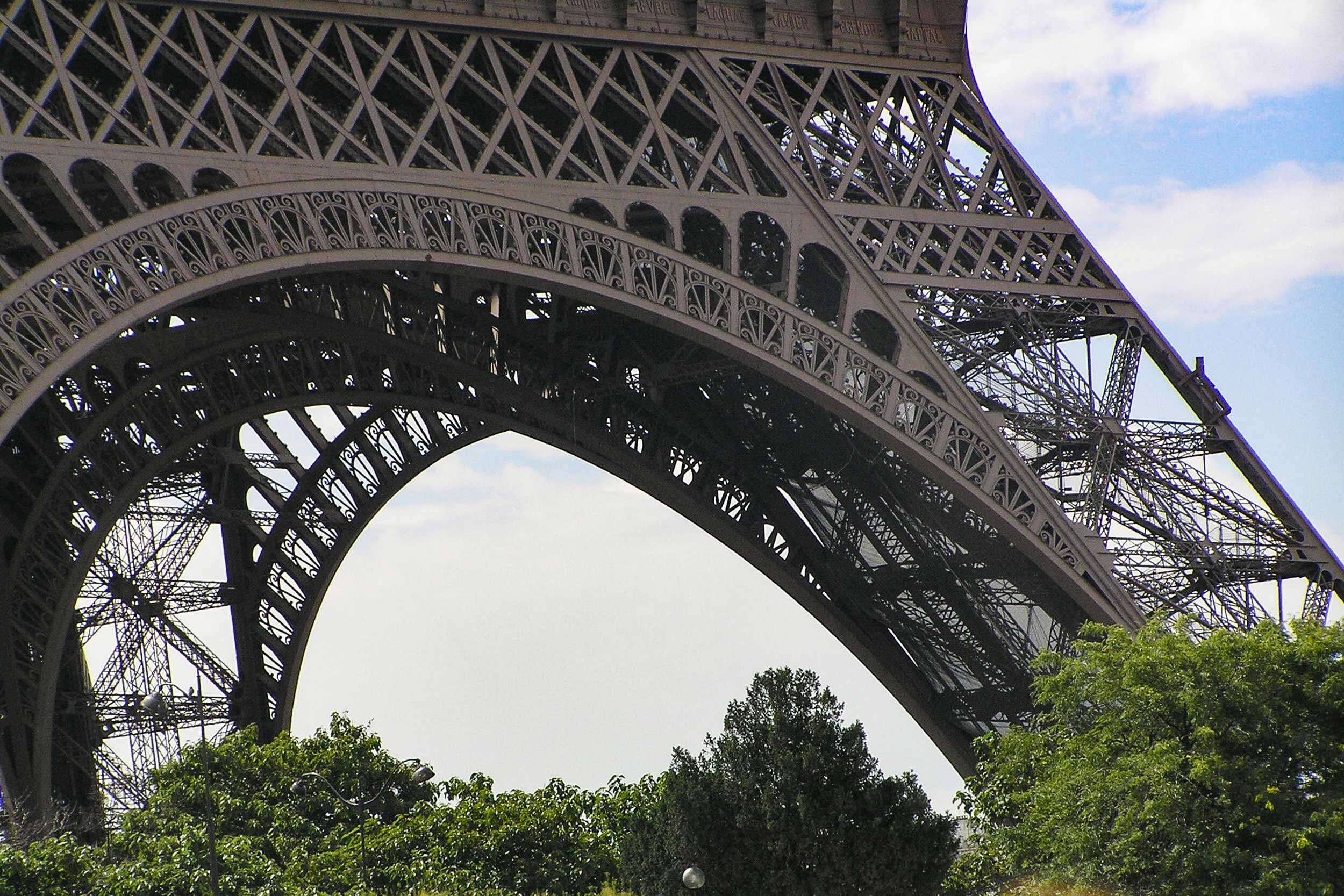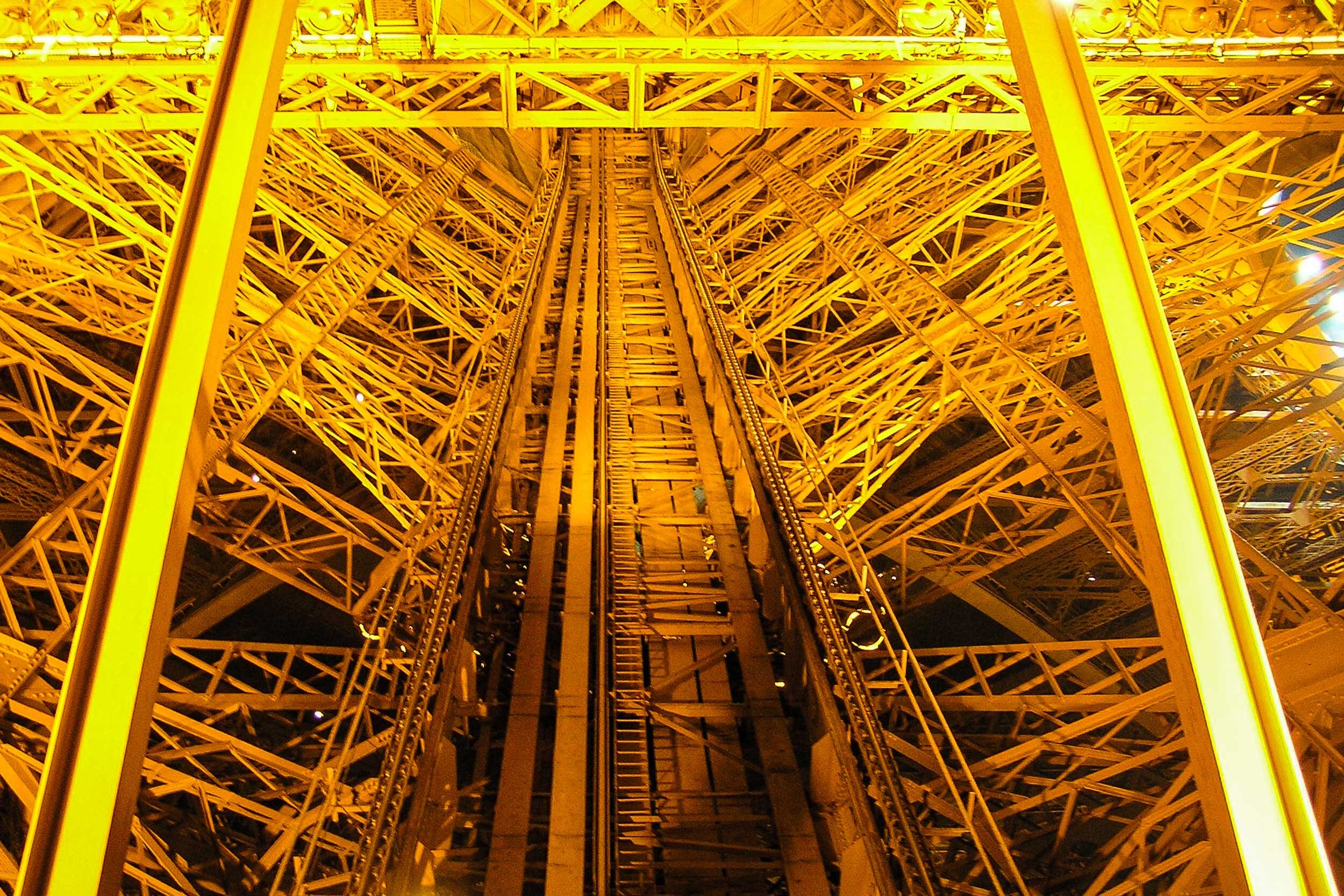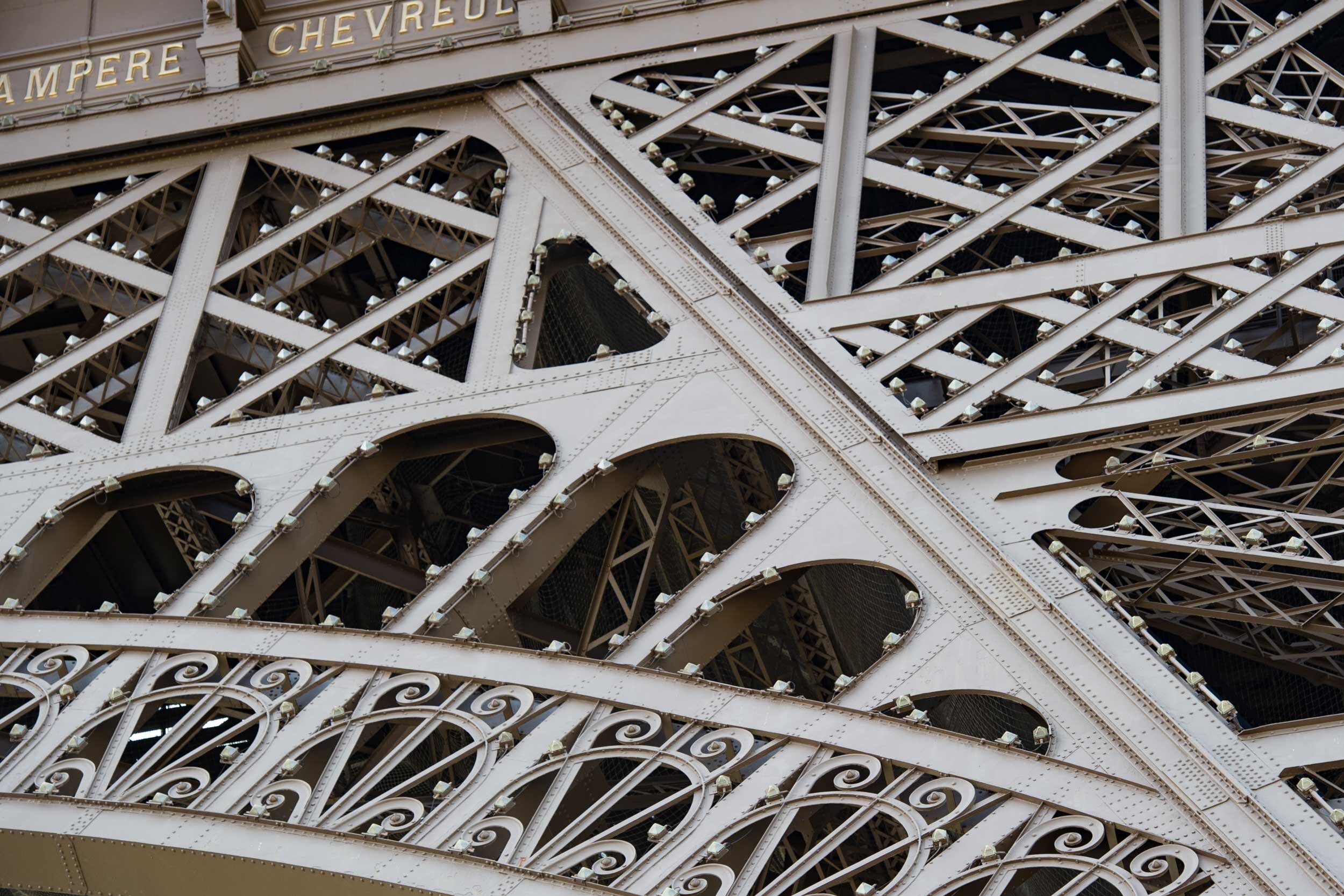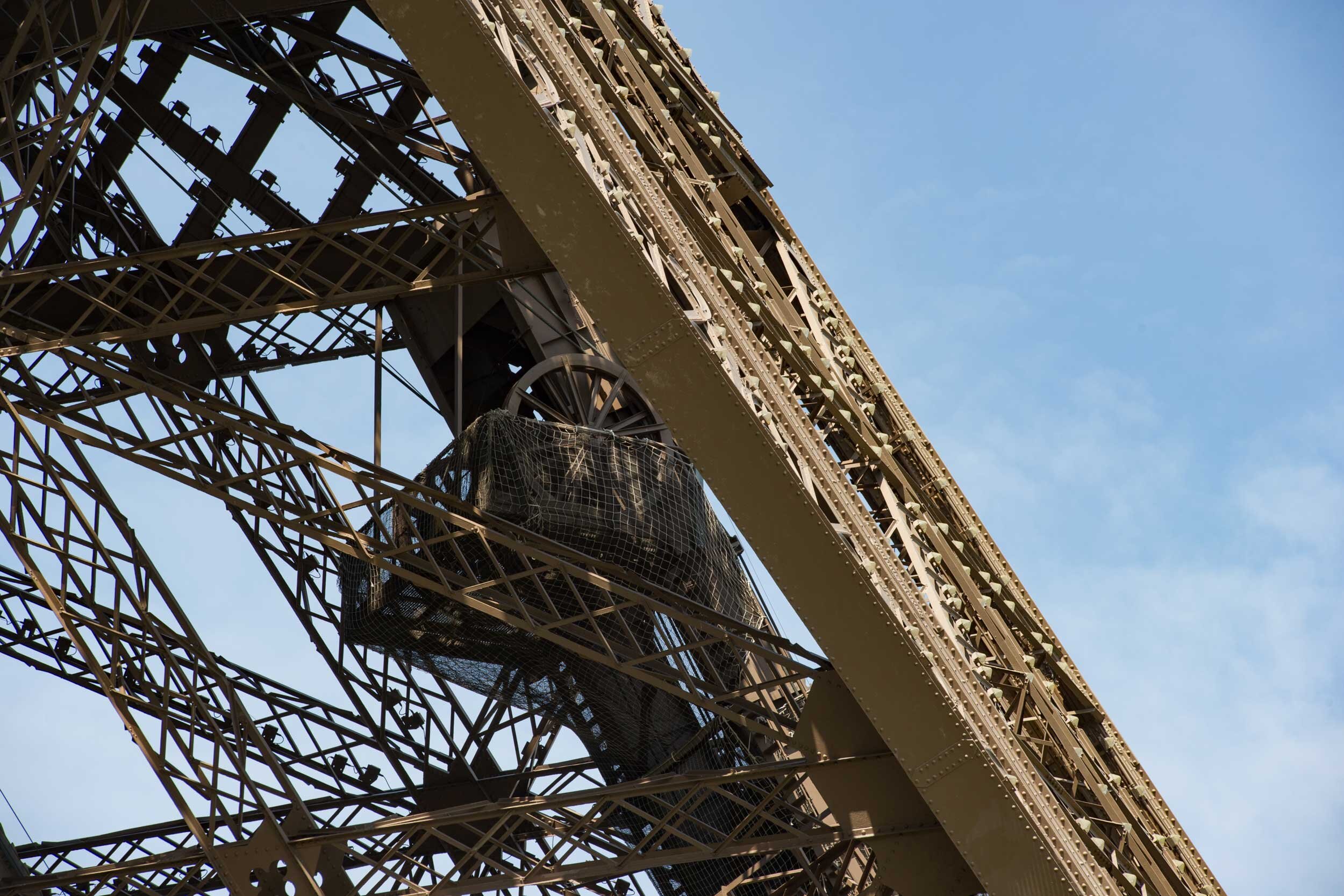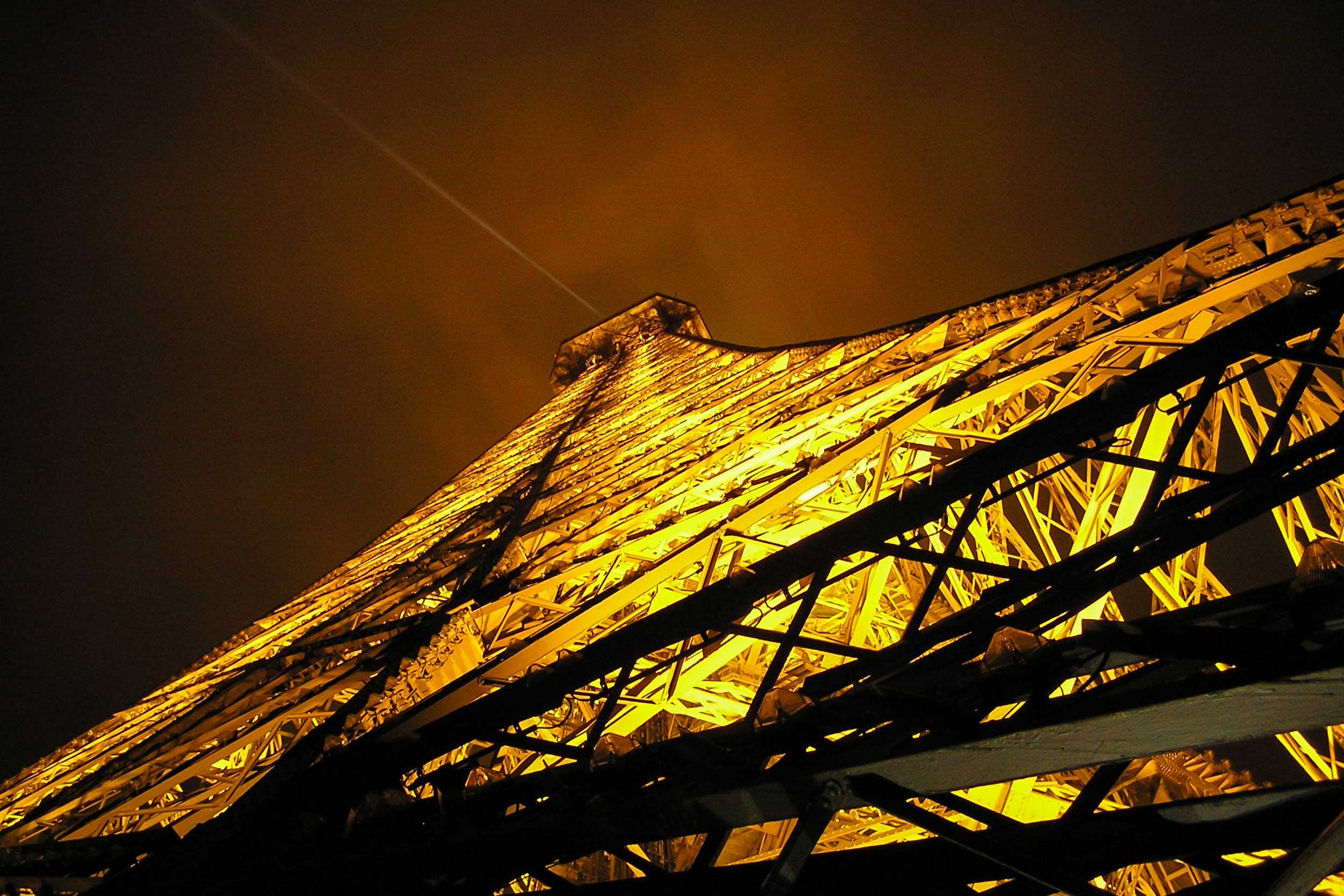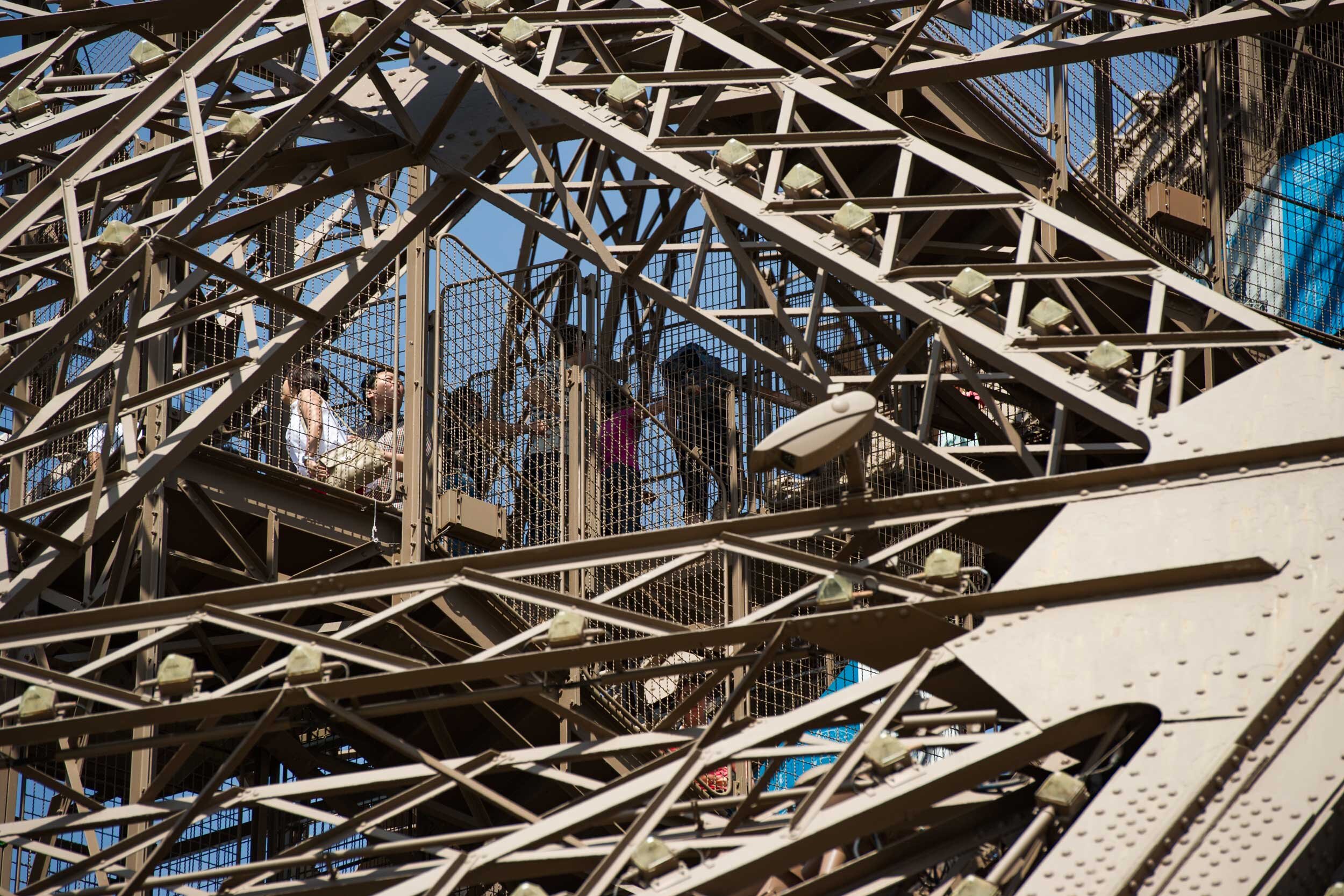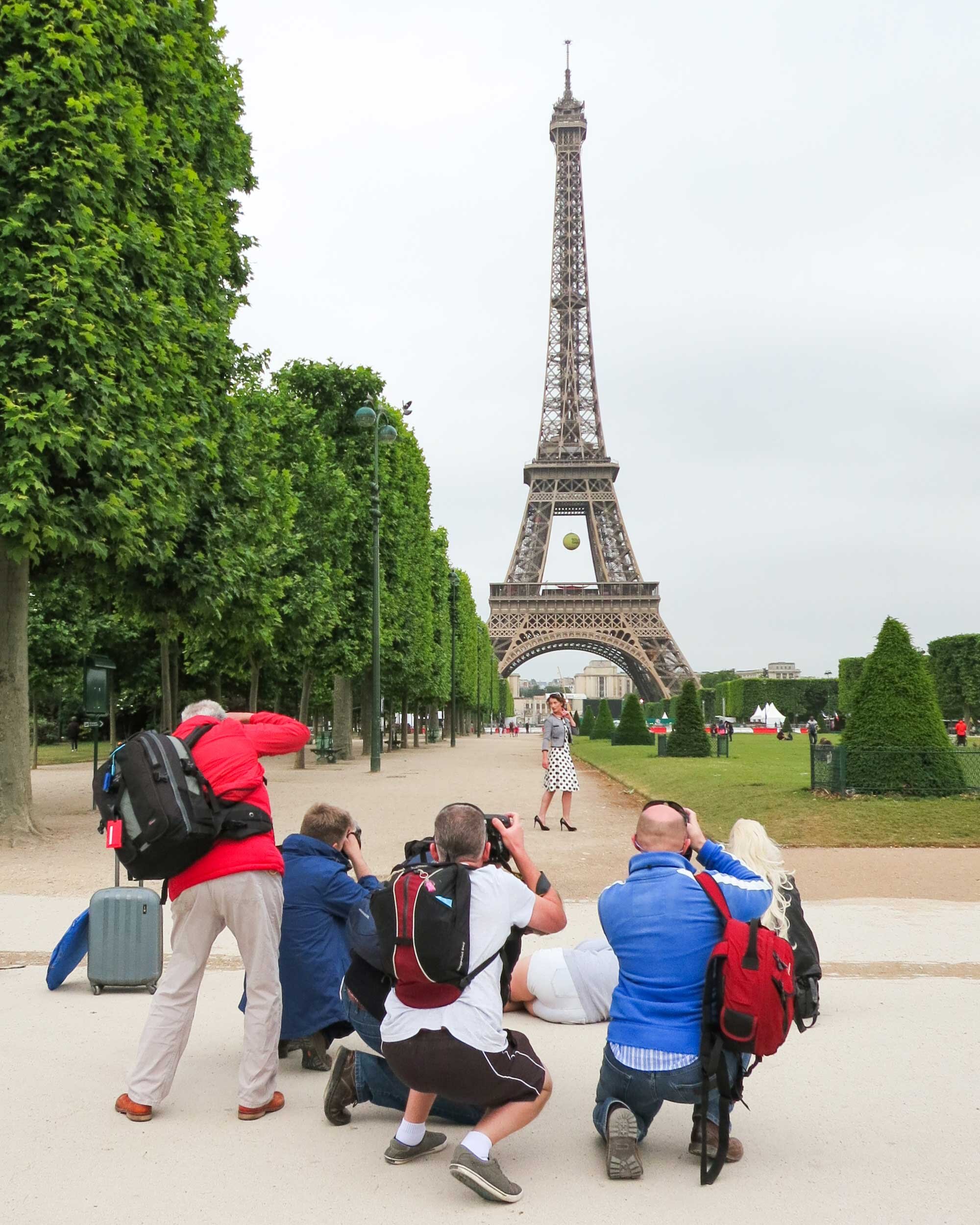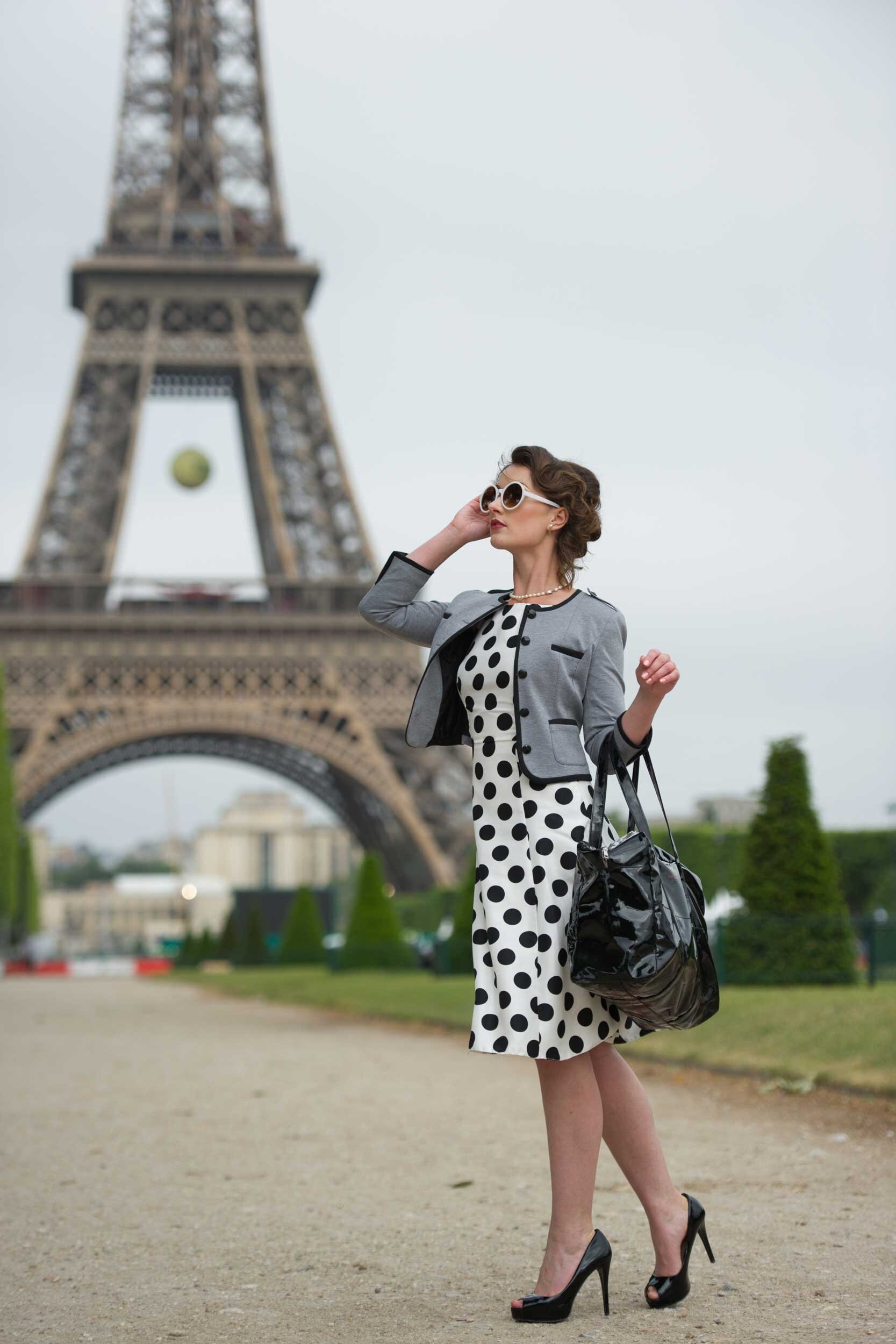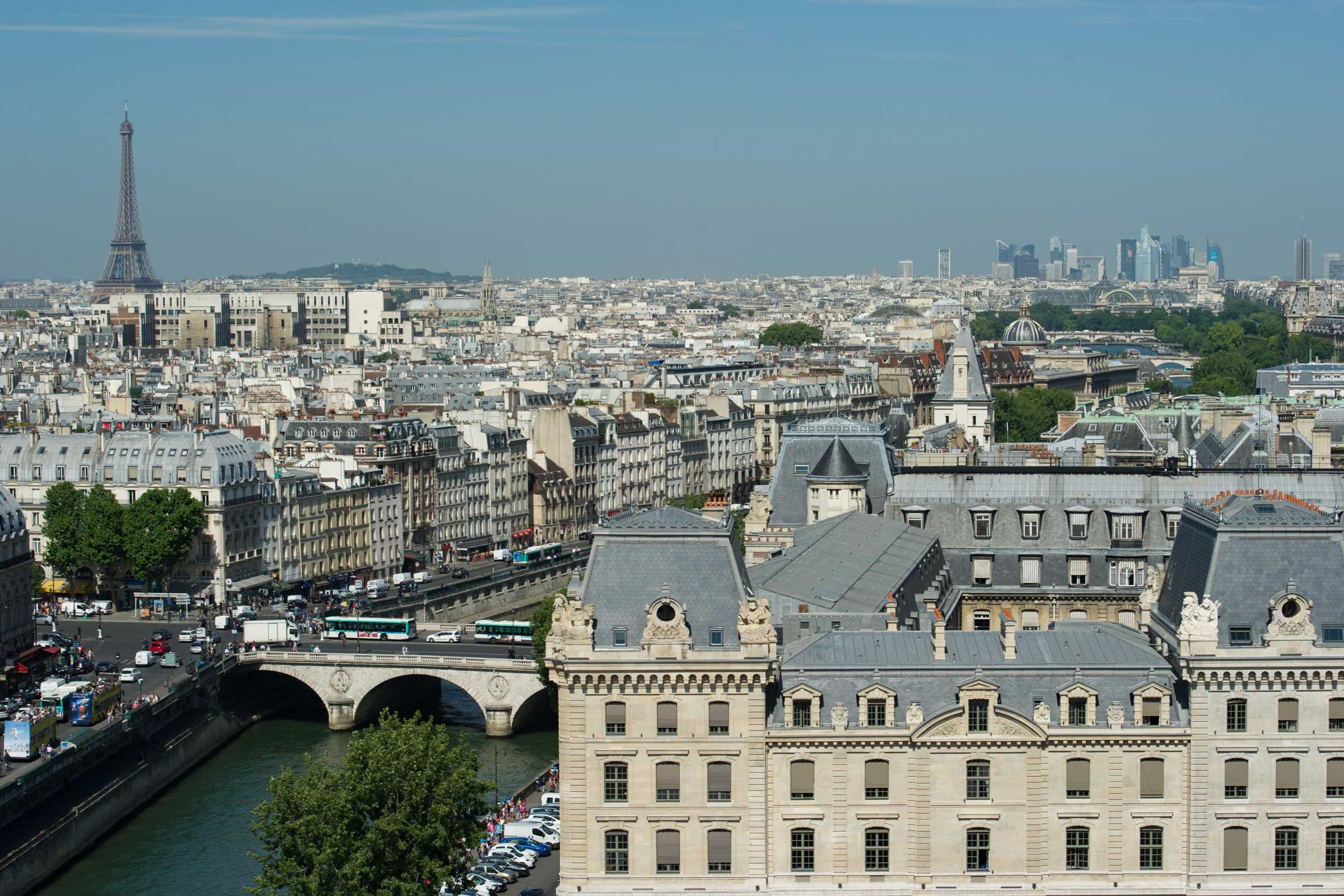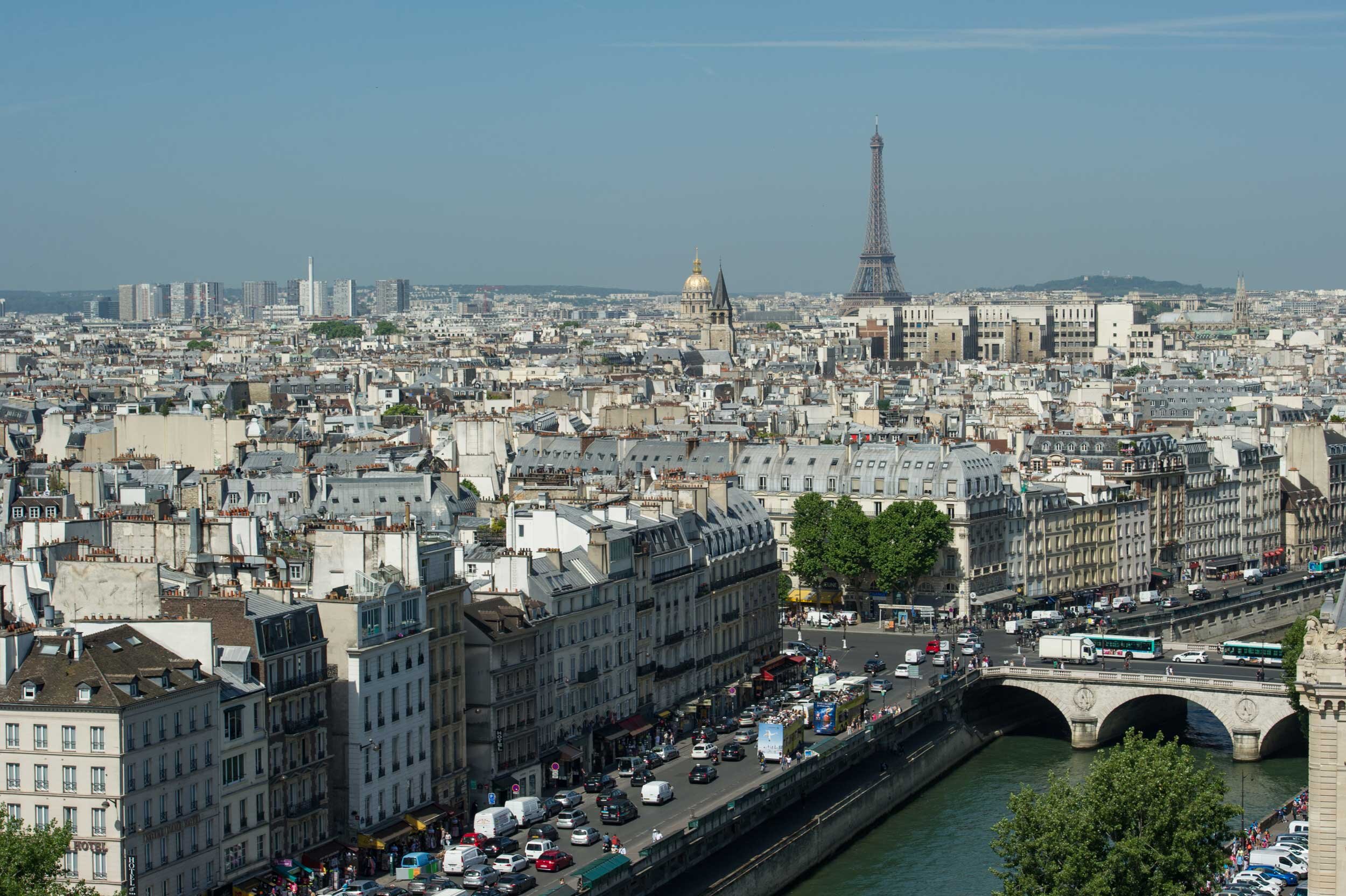Happy Birthday Eiffel Tower
One week ago, I was celebrating my birthday with my family and my three-year-old grandson asked me “What’s this Mémé?” He was holding the Eiffel Tower charm on my necklace. “It’s called the Eiffel Tower and it’s a special building in Paris.” I promised to show him some photos next time he visited.
Eiffel Tower, Paris
With that in mind, I began searching through our vast collection of photos and information on Paris. After further research, I discovered that I wasn’t the only one celebrating a birthday this week.
Eiffel Tower from our Seine River cruise with Pont Alexandre III in the foreground
Alexandre-Gustave Eiffel, whose bust is in the first photo, was born in 1832 in Dijon, France. He attended Ecole Centrale des Arts et Manufactures in Paris, studying chemistry, and graduated in 1855. His first job was with a company that specialised in the metal construction of steam-powered machines and the manufacturing of railway components.
The internal workings of one of the elevators in the Eiffel Tower
He moved to south-west France and oversaw the construction of the iron girder railway bridge in Bordeaux, Pont de Pierre. It was completed in 1858 when Gustave was only 25 years old. In 1864, he set up his own company, specialising in the construction of metal works. He went on to design the viaduct, know as Ponte Maria Pia Bridge, over the Douro River in Oporto, Portugal, in 1876.
C’est moi et Chris at Champs de Mars
In 1884, he completed the Garabit Viaduct, constructed in the mountainous Cantal region of France. It was built 122 metres above the river, making it the highest bridge in the world at that time.
He continued with the Pest Railway Station in Hungary, the dome of the Nice observatory and also designed the metallic structure of the famous Statue of Liberty.
This is how it looks under the Eiffel Tower if you arrive early in the morning before the crowds
His portable bridges were sold all around the world as kits.
When the tourists arrive, it’s much busier and there are queues for the elevators
The famous Eiffel Tower was completed on the 31st March, 1889.
Eiffel Tower viewed from the Seine River
His involvement with the Panama Canal project was the biggest contract of his life. Unfortunately, the project did not go well and Eiffel, along with his son and the manager of the project, found themselves in a financial scandal. They were fined and each served a two-year jail sentence. Eiffel’s honour and dignity were severely compromised and he withdrew from business. Eventually, the court ruling was annulled and he was liberated from any further obligations to the project.
View from Champs de Mars
Eiffel returned to his scientific roots and spent his last thirty years devoting himself to experimenting.
The Eiffel Tower was due to be dismantled after twenty years but Eiffel wanted his tower to be a permanent monument so he had to give it a useful purpose. He worked on wind resistance experiments atop the tower, used it as a meteorological observation post and installed an aerial for the new science of radio broadcasting. His research continued with work in aerodynamics and he built a wind tunnel at the foot of the tower. This development was followed by a second and much larger one on Rue Boileau in Paris in 1909. This latter is still in service.
Alexandre-Gustave Eiffel died on 27 December 1923 at the age of 91.
Fascinating Facts
· Gustave Eiffel did not design the Eiffel Tower. It was, in fact, designed by two men who worked for his company. They teamed up with the architect, Stephen Sauvestre, to enter the design in the Exposition Universelle.
· Each of the 18,000 pieces used to construct the tower were specifically designed with calculations accurate to a tenth of a millimetre.
· At any one time, there were between 150 and 300 workers onsite.
· 2,500,000 rivets were used in the construction.
· The tower weighs 10,000 tonnes.
· 50 tonnes of paint are added every 7 years.
· There were 1,953,122 visitors at the Eiffel Tower during the Exposition, which was held between 15th May and 6th November, 1889.
· In the first week, almost 30,000 people climbed the monument using the staircase with 1,710 steps to the top. In recent times, approximately 7 million visitors climb the tower per year.
· The lifts first started operating on 26th May, 1889. Two of the original lifts are still in operation and there are 5 in total.
· At the time, it was the tallest building in the world at 276m plus the aerial
· Gustave Eiffel had his office at the top of the tower and there is a reconstruction with wax models there today.
· There are currently 120 antennae on the tower, 32 for radio and 45 for television.
· Gustave paid homage to 72 scientists by having their names engraved on the borders of the four sides of the tower.
· For the Exposition Universelle of 1889, four majestic wooden pavilions that were designed by Stephen Sauvestre, the architect, decked the platform on the first floor. Each was a restaurant and could seat 500 people. The kitchens were attached to the underside of the platform and, until 1900, the restaurants relied on gas lights. Over the years, there have been many changes to the number and type of restaurants. There are currently two restaurants “58 Tour Eiffel” on first floor and “Jules Verne” on the second floor. The latter is serviced by its exclusive elevator. The Champagne Bar is at the top of the tower.
· The tower first had lights in 1889, as gaslights inside opalescent glass globes, and these illuminated the tower at night. It was like a lighthouse that intermittently altered its intensity and projected the colours of the French flag.
Eiffel Tower by night
· During the Exposition Universelle of 1900, the light fixtures became entirely electric and numbered 5,000 bulbs placed at regular intervals on all of the tower’s facades.
· The current lights were introduced on 31st December, 1985. The 20,000 bulbs now give the tower it’s golden glow. Sensors turn these on within 10 minutes of nightfall and there is a five minute bright, sparkling display every hour, on the hour, until 1 or 2 am.
Chris attended a Fashion Photography workshop in Paris with Dan Tidswell. Here they are on the steps of the Trocodéro and in the photos above are on the Champs de Mars.
https://dantidswell.co.uk/workshops/
In my post about our first trip to Paris, I described our experience of riding the elevators and taking in the spectacular view. On other trips, we have experienced views of the tower from a boat on the Seine and admired it from various locations: Place de Trocodéro, Champs de Mars and the towers of Notre Dame Cathedral. We’ve walked underneath it in the early morning with hardly a soul about. A visit to the Eiffel Tower is a must and I can’t wait to get back to France for another opportunity.
One of the world’s most famous man-made monuments
The research for this blog post was found on these fabulous references:
https://www.toureiffel.paris/en/the-monument/gustave-eiffel
https://www.pariscityvision.com/en/paris/landmarks/eiffel-tower/gustave-eiffel
https://thetourguy.com/france/paris/eiffel-tower/gustave-eiffel/
Now I’m really looking forward to seeing the movie ‘Eiffel’ next week as part of this year’s Alliance Francaise French Film Festival in Sydney.
Views from the towers of Notre Dame de Paris Cathedral










